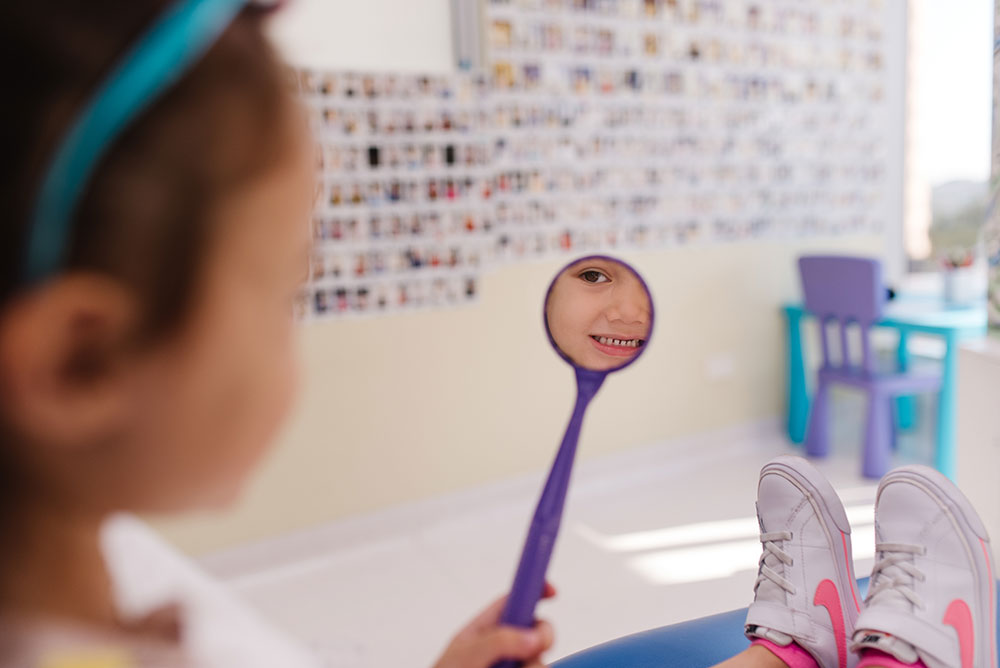What is hypomineralisation?
Hypomineralisation, or “chalky teeth” is a common dental condition where teeth have poor enamel quality which may lead to sensitivity, breakdown, and high risk of decay. Nearly 1 in 5 children have hypomineralisation and the condition varies from mild to severe.
What causes hypomineralisation?
The cells that form enamel are very sensitive to disturbances or disorders during a child’s growth which can lead to enamel defects in both baby and adult teeth.
The cause is not fully understood although there are some risk factors that have been linked to hypomineralisation including:
- The mother’s health during pregnancy
- Prematurity
- Medications given to mother prior to birth, or to baby after birth
- Childhood illnesses (high fevers, viral infections)
- Nutrition
- Trauma
It is important to remember that hypomineralisation is not your, or your child’s fault!
What does it look like?
Hypomineralised teeth have a variety of appearances ranging from “extra white” flecking to yellow patches to uneven brown surfaces.
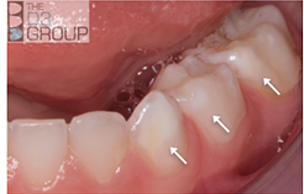

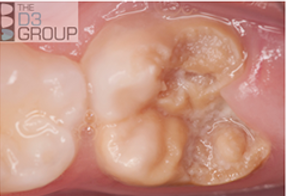
How does affect my child?
If hypomineralised teeth are left untreated, the tooth may wear or breakdown due to the poor strength and inability to withstand normal conditions in the mouth. Hypomineralised enamel contains up to 20% less minerals, hence it is softer than unaffected enamel.
Sensitivity to hot or cold food and drinks can occur as the affected enamel is porous. Typically, healthy enamel provides a protective coverage around the inner layers of the tooth which includes the nerve. If the enamel is porous, the nerve will react more to the oral environment.
Decay and enamel breakdown can lead to pain, infection, or abscess which ultimately leads to removal of the tooth.
The uneven appearance of hypomineralised front teeth may cause social problems and affect the child’s self- confidence.
Treatment
Depending on the severity of the hypomineralisation and the symptoms experienced by the child, there are multiple options for treatment.
- Fluoride varnish application – As the teeth are lacking in minerals, fluoride treatments provide a way to put minerals back into the tooth and strengthening it.
- Fissure sealant – A protective coating to cover the weak areas and provide fluoride release to remineralise the tooth.

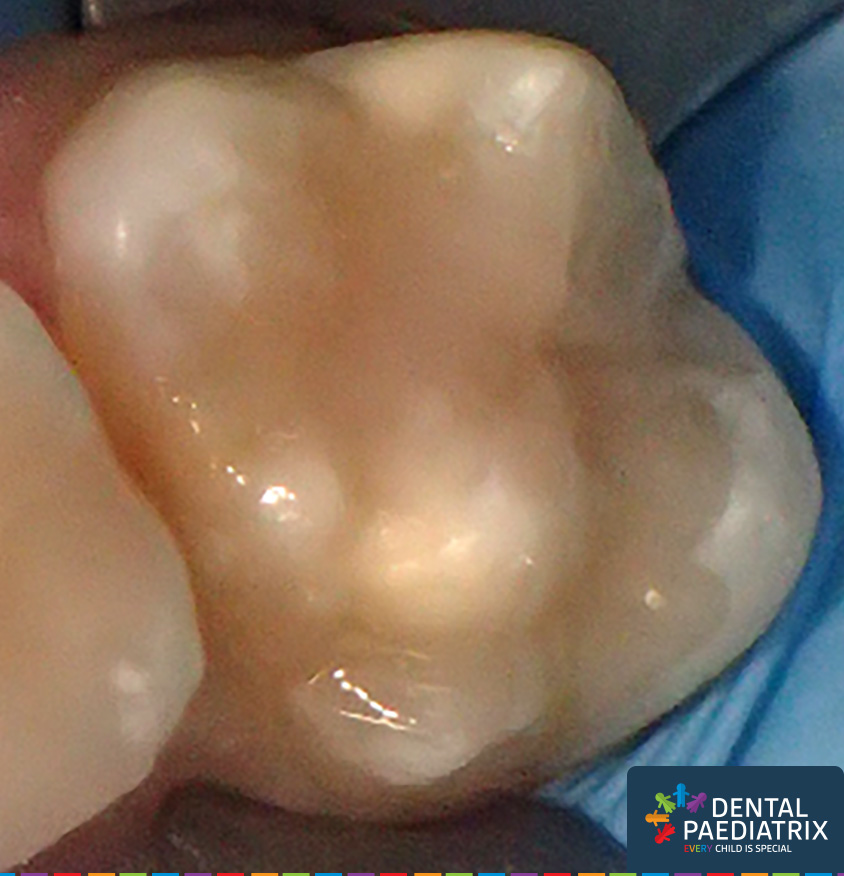
Hypomineralised molars before and after applying fissure sealants
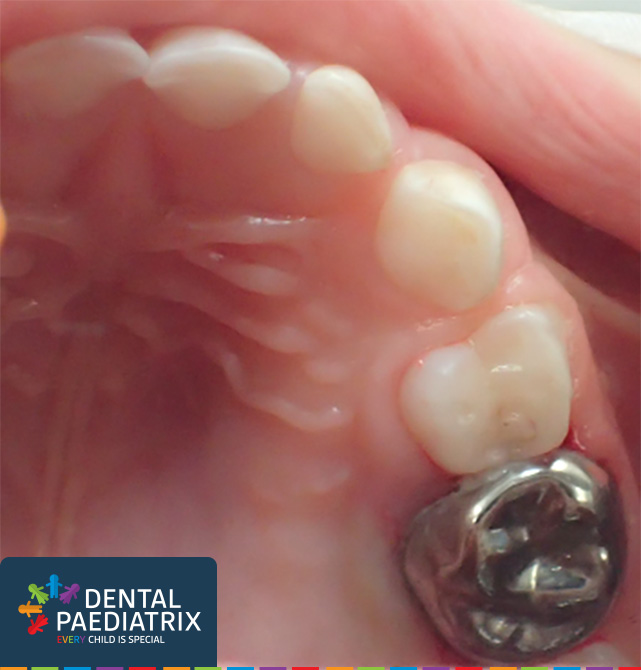
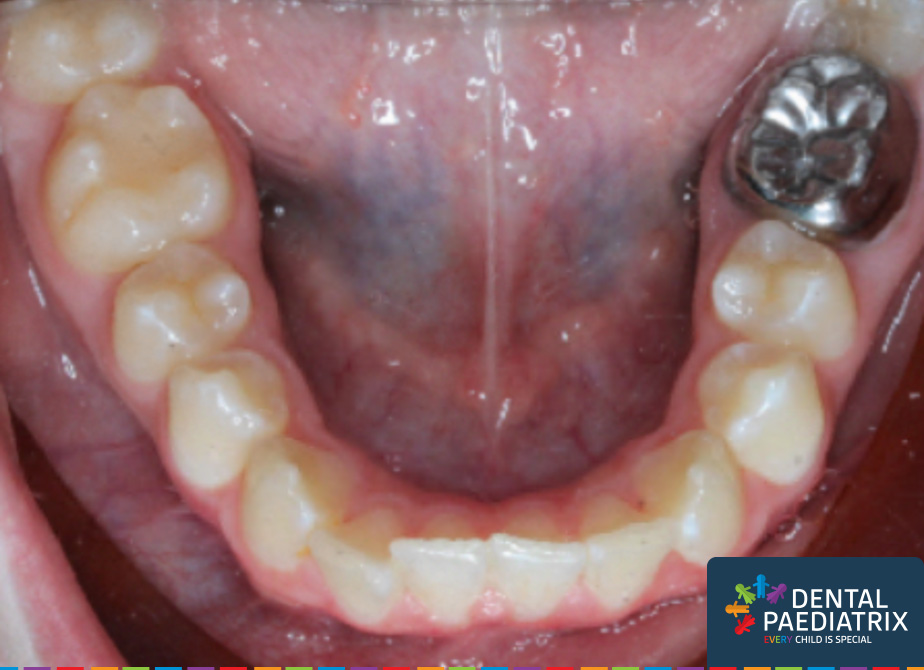
- Stainless steel crown – Provides full coverage of the tooth to protect it from further breakdown due to biting forces, acid attack, decay, and sensitivity.
- For primary teeth, the crowns will protect the teeth until they fall out naturally, which helps maintain function, and also the space for the next adult tooth to grow.
- For permanent teeth, stainless steel crowns are placed to protect them until adulthood when the teeth are mature enough to have permanent tooth-coloured crowns.
- Extraction – Removal of the hypomineralised tooth may be required if it has extensive damage or there is deep decay. If hypomineralised molars are detected early along with crowding issues, the paediatric dentist may refer the child to an orthodontist to coordinate a long-term plan for the affected teeth as timing for extractions are important. If wisdom teeth are present, the hypomineralised molars may be extracted to make space to correct the crowding and the molars will be moved forward.
- Microabrasion – To improve the appearance of hypomineralised front teeth, a combination of acid solution and abrasive powder can be used to polish a thin layer of the enamel.
- Filling a tooth with white filling material may be difficult because the defective enamel compromises the strength of the adhesive. It tends to fall out more frequently, or decay can form under the surface due to the separation of the filling and the tooth.
Taking care of hypomineralised teeth at home
Good oral hygiene and a healthy diet is crucial in stabilising the hypomineralised teeth at home, this includes:
- Brushing twice daily with fluoride toothpaste for 2 minutes
- Children under 6 years old are recommended to use 6+ toothpaste for higher fluoride content. Parents to dispense a smear of toothpaste on the brush for the child (instead of a pea size)
- Parental assistance up to the age of 8 for brushing and flossing
- Limit sweets and acidic foods
- Spit/Don’t rinse: By spitting toothpaste then not rinsing with water, it allows fluoride to remain on the teeth and remineralise the enamel
- Apply Toothmousse at night before bed
While there is no cure for hypomineralisation, early intervention is key to diagnosing and managing the condition to keep the affected teeth as long as possible.
References
The D3 group: www.thed3group.org/what-is-molar-hypomin.html

